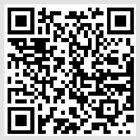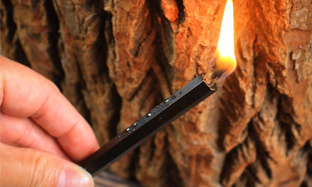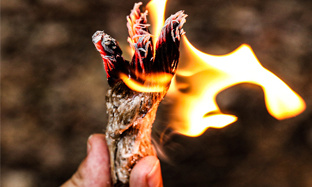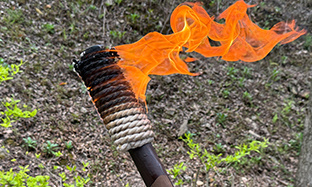The production process of waxed paper rolls involves combining paper and wax materials through a series of processing steps to form roll-shaped products with water-resistant and oil-resistant properties.
Release time:
2025-07-29
Select the required base paper (such as tissue paper, kraft paper, etc.),
The production process of waxed paper rolls involves combining paper and wax materials through a series of processing steps to form roll-shaped products with water-resistant and oil-resistant properties. Waxed paper rolls for different purposes (food-grade, industrial-grade) slightly differ in raw material selection and process details, but the core processes are basically the same. Here are the main production process steps:
I. Raw Material Preparation
Base paper processing
Select the required base paper (such as tissue paper, kraft paper, etc.), first cut and sort it to remove impurities and damaged parts, ensuring the paper is flat and wrinkle-free.
In some processes, the paper will be preheated or dried to reduce its moisture content (usually controlled at 5%-8%), preventing bubbles or uneven adhesion during subsequent wax coating.
Wax material preparation
Choose wax materials according to the purpose: food-grade waxed paper rolls often use food-grade paraffin, beeswax, or plant wax; industrial-grade ones mostly use industrial paraffin, synthetic wax, etc.
Put the wax materials into a wax melting kettle, heat them (usually at 60-100°C, adjusted according to the melting point of the wax) to completely melt them into a liquid state, and stir to remove impurities at the same time, ensuring the wax liquid is uniform and pure.
II. Wax Coating (Core Process)
Wax coating is a key step determining the quality of waxed paper rolls. Its purpose is to make the wax liquid evenly adhere to the paper surface, forming a continuous protective film. Common coating methods are as follows:
Dipping method
Completely immerse the paper in the molten wax liquid. By controlling the running speed of the paper (usually 10-30 meters per minute) and the temperature of the wax liquid, both sides of the paper can evenly absorb the wax liquid.
After dipping, the paper passes through squeeze rollers (or scrapers) to remove excess wax liquid and adjust the thickness of the wax layer (generally controlled at 5-20 microns). This method is suitable for industrial-grade waxed paper that requires a higher thickness of the wax layer.
Brushing method
Use a brush or roller to evenly apply the wax liquid to the paper surface, which can be coated on one or both sides. It is flexible to operate and suitable for small-batch production or special specifications of waxed paper, but the efficiency is low and the uniformity of the wax layer is slightly poor.
Curtain coating method
The wax liquid is sprinkled on the running paper surface in a linear manner through a nozzle, and then flattened by a smoothing roller to form a uniform wax layer. This method is suitable for thin wax layer coating, can reduce wax liquid waste, and is often used in the production of food-grade thin waxed paper.
Hot melt coating method
A hot melt adhesive coating machine is used to melt the solid wax through a heating device, and then directly coat it on the paper surface through a coating head. It is suitable for high-viscosity wax materials, and the wax layer has stronger adhesion.
III. Drying and Cooling
The paper coated with wax liquid enters the drying and cooling area, and the wax layer is quickly solidified through natural air cooling or low-temperature drying (temperature 30-50°C).
The cooling process needs to control the speed to avoid cracking of the wax layer or peeling from the paper due to too fast cooling, and finally form a stable wax protective film.
IV. Slitting and Winding
Slitting
According to the product specifications (such as width and length), use a slitting machine to cut the large roll of waxed paper into small rolls of the required width. During the slitting process, ensure the cutting edge is neat to prevent burrs.
Winding
The slit waxed paper is wound onto paper cores (paper tubes) through a winding machine, and the tension is controlled to make the roll tight and uniform, avoiding looseness or deformation. After winding, the ends are trimmed, and then packaged (such as plastic film wrapping) to complete the production of waxed paper rolls.
The entire production process focuses on controlling the uniformity of the wax layer, the adhesion between the wax layer and the paper, and the stability of product specifications, so as to ensure that the waxed paper roll has reliable water resistance, oil resistance and usability.
Key words:
- All
- Product Management
- News
- Introduction
- Enterprise outlets
- FAQ
- Enterprise Video
- Enterprise Atlas
recommend News

Contact Us
Sunrich Fireworks Co., Ltd. China
Contact person: colin
Tel: +8617775855914
Email: colin@sunrichfireworks.com
Address: Third Floor, Jin Kun Electric Vehicle, Hehua Subdistrict Office, Liuyang City, Hunan Province, China
Focus on us

Tel:
E-mail:
在线客服添加返回顶部
右侧在线客服样式 1,2,3 1
图片alt标题设置: Sunrich Fireworks Co., Ltd. China
表单验证提示文本: Content cannot be empty!
循环体没有内容时: Sorry,no matching items were found.
CSS / JS 文件放置地





